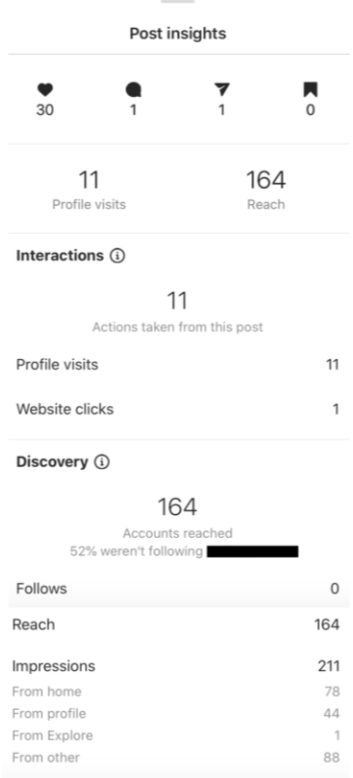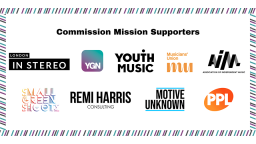
Data can be such a powerful tool but only if you can convert it into real life action; more streams, more album sales, more ticket purchases and higher fan engagement.
Written by Sadie Thompson, as part of Commission Mission.
I can see your eyes glaze over at the mention of the word ‘data’. I get it; it’s not the most glamorous aspect of the music industry, but it is without a doubt the most important. If you are not using your data correctly in 2020 then you are seriously underutilizing resources you have right at your fingertips. It’s a complete minefield to know where to begin, what data is worth looking at and how you can use it effectively. The key here is not the data itself but how to apply it. Data can be such a powerful tool but only if you can convert it into real life action; more streams, more album sales, more ticket purchases and higher fan engagement. Using your data with creativity and instinct inevitably leads to a better, more optimised outcome.
As an introduction to data, we’re going to look at what metrics you should be paying attention to and what they can inform, the key platforms to use and some nerdier forms of data such as CRM and metadata. While this might sound intimidating, it’s actually quite simple.

Demographics
There are hundreds of different metrics to get lost in, but to start with, what are your demographics? Demographics refer to the people who are consuming your content; their age, location and gender being a few examples. This is the biggest insight as to who your target audience is. It is important to use this information to maximise your biggest audiences but also know where you need to grow, and how to go about that.
Age
What this will influence:
- Music venues used for shows. Many will have an 18+ policy which is not ideal if most of the fans are below this age.
- The forms of social media you use. An older demographic may be more responsive to Facebook and Instagram whereas Gen Zs will hop on board with TikTok.
- Merchandise. Age affects how much disposable income a fan will have so pay attention to the price of merchandise and the type of merchandise. Trying to flog your own beer to a fanbase who are mainly under 18 is not a great business decision.
Location
What this will influence:
- The most obvious - where to tour.
- What time of day to post content and release music.
- What locations to push advertising spend to.
- The type of content you put out, for example the language you use or cultural references.
Gender
What this will influence:
- The type of content you put out. I have seen that selfie assets used in advertising from female artists get a bigger male response, for example. (Shock horror!).
- Again, where to push advertising spend. If you know that your current fanbase is mainly male and you want to gain more female fans, you can alter the target group to exclude males or tailor a targeting list of related artists who have a bigger female fanbase.
Just from these screens you can see how active you’ve been, the day people have been most engaged with your profile and the actions they have taken, the location the users are coming from and the engagement from a paid post. From this data you could conclude that:
- It’s best to post on a Thursday as that’s when your followers have been most engaged.
- The majority of users have come from New York so consider this time zone.
- On the paid post, more people have visited your profile than clicked through to your website. Consider putting the site link in your bio to capture the people who have clicked away the content.
Then you can look at the individual performance of a post and how people are reacting to your content.

Post Insights can tell you:
- What action people have taken from your post. Again, if you are getting lots of profile visits but not many website clicks consider calling the link out in the post itself or making your site URL clearer in your bio.
- Whether the accounts that the post reached were followers. New followers will require a different approach to current fans. If you are reaching lots of new people, it might be worth following up with another post directing to information they may have missed eg. new music or show announcements.
- The number of impressions (times the post was viewed) and where on Instagram these impressions came from. This will give you an indication of how successful the post has been in general and if you should continue with this type of content.
- The reach (number of individual users that have seen it). Again, this shows you how well the post did and can inform future content.
As we know by now, social media platforms are harvesting data from us all. Activity such as interests, page engagement, video views and site visits is being collected, which can then be used in marketing to target the most relevant people. This is good for consumers because you aren't being shown content you aren't interested in. It is also beneficial for marketers to get the best results from the money invested. Combine this sort of data with demographics and you can set up a clear ad plan to ensure that the right people are being exposed to you.
Which platforms to look at
The major sources of rich data, particularly about fans, are social media platforms; Facebook, Instagram, Twitter and YouTube. These are the key places to find out the demographics of your target audience and how they engage with your content. All of these platforms have Business Managers where you can access this information. Another place to check out is Spotify For Artists. DSPs tend to be quite protective of their data and have only started sharing with artists and labels relatively recently. Spotify For Artists shows you demographic information, where people are finding your music and streaming data. Not only is it exciting to see in real time who is listening to your music, but you can cross reference this information with other channels to find gaps and guide your strategy. For example if you are getting a higher proportion of male listeners on Spotify than are interacting with you on Instagram, think about what content you could put out that would appeal more to this fanbase. Spotify For Artists also shows you what playlists your music is being added to and from here you could discover a fanbase you didn't even know existed. If your tracks keep being added to electro playlists but you have traditionally considered yourself indie, perhaps there is potential to branch into DJ sets instead of regular live sets with a band.
CRM
Customer Relationship Management sounds a lot more dull than it is. Whilst CRM can be a large and complex system, for most artists it is basically email and the associated data that comes with it, for example; name, birthday, address, telephone. More commonly known as a mailing list! This is an incredibly valuable source of data because the people in this pool have explicitly expressed an interest in you. These are the people who are going to be most likely to engage with your music, merchandise or tour sales and should be cherished and treated with the utmost respect. Mailchimp is an email service you don't have to pay for until you get 2000 subscribers so it is great for starting out. Create incentives such as exclusive content and early release access to get people to sign up to your mailing list. An age-old favourite is to give out a free badge at the merch table in return for a sign up. A reason why fan email lists work so well is because it is a one-to-one communication medium. Compared to social media which is a one-to-many platform, email lists allow you to speak to fans on an individual level which feels more personal hopefully resulting in a higher engagement from them.
Metadata
I couldn't write an article about data and how to use it without mentioning metadata. You may have heard this world being buzzed around the industry, and that is because it is oh so very important. In fact, if you are not setting metadata up properly then the financial losses can be heartbreaking. Metadata is all of the information attached to a song including; title, genre, songwriter, producer, publisher and label among other things. It is the way the track is traced back to the people who had a hand in making it. Unfortunately, if metadata is submitted incorrectly, it may just be ignored. For example, if 3 artists collaborated on a track and they were all entered into the same field, some labels would simply ignore it and none of them would be paid royalties. Luckily, the industry is waking up to the importance of metadata and getting more knowledgeable in how to handle it properly, however, we are not there yet. Mainly it is the distributor/publisher/label who will be responsible for submitting metadata but it is good to have an understanding of it, especially if an artist is releasing their music independently. Some places to find more about how to get accurate metadata would be from your distributor (TuneCore, DistroKid, CD Baby etc) Music publishers such as Songtrust also have lots of useful information. For a more independent approach; Splits is an app that creates a digital agreement between the collaborators of a track regarding percentage of ownership. Another tool to look at is Creator Credits which works within Pro Tools to allow artists to embed their metadata themselves.
The things you could do with your data is infinite but hopefully this introduction will give you an idea on where to start and has opened your eyes to aspects you could explore further. Data is a great tool to assist creativity, where you will get solid proof if an idea has been effective or not. Robots will never be able to replace humans in decision making, but gone are the days where you make it big time from pure luck. Start off by looking at your social media for an insight into your fans, check in on your streaming data, ensure you have a CRM database and understand how to make the most out of it. Finally, for the love of music, make sure your metadata is correct.
Services to get you started:
- Instagram, Twitter, Facebook, YouTube business profiles https://www.facebook.com/business/help
- Mailchimp https://mailchimp.com
- Google Analytics https://analytics.google.com/analytics
- Linktree https://linktr.ee/

Commission Mission was created by Young Guns Network and London In Stereo to commission 20 new and experienced freelance writers to create articles to inspire, inform and entertain young people in the music industry who are struggling during Covid-19.
The supporters who made this project possible were Association of Independent Music, London In Stereo, Musicians Union, Motive Unknown, PPL, Remi Harris Consulting, Small Green Shoots, Young Guns Network, Youth Music

Social media
It is easy to access data from your social media platforms. There are two types of data to tap into here. The first being from your personal profile and how people are engaging with the content. This is the sort of data you can take an immediate response to. The second is the data that the platform has collected on its users which can be used for marketing.
The below is an example of what an Instagram Business Account looks like and where you can see data from your profile.